Vaccine mandate update: Procedures for enforcement, faculty concerns
Doses of the Moderna COVID-19 vaccine made available by OU. With 18% of the student body still not compliant with the vaccine mandate, what do we know about how the university is enforcing the mandate?
A month after OU’s announcement that the vaccine mandate was being expanded from just residents to all students and personnel coming to campus for work and class, faculty and students still have unanswered questions about the mandate. The main question being how exactly is the mandate being enforced. So, what do we know?
Since the Aug. 23 roll out of the mandate, there’s been specific dates set for when shots have to be completed and uploaded to the Graham Health Center portal. Initial deadlines were set as first shot by Friday, Sept. 3 and second shot for Moderna and Pfizer by Friday, Oct. 1. On Saturday, Sept. 4, a Campus Communications email announced a deadline extension of one week to Sept. 10 for first shots and Oct. 8 for second doses.
On Aug. 26, guidelines for religious and medical vaccine exemptions were announced. The medical exemption form involved two steps — getting a licensed and qualified medical provider to complete the OU student medical exemption request form and the student filling out and submitting their respective student medical exemption request. For religious exemptions, students had to fill out the religious belief exemption request. Faculty and staff had separate forms to fill out for religious and medical exemptions. Additionally, anyone granted an exemption is subject to weekly COVID-19 testing. Testing became available for students on Monday, Sept. 20.
On Sept. 13, a President’s Perspective email was released to the campus community in which President Ora Pescovitz encouraged students to “please make sure you’re doing all you can to remain healthy, and protected from contracting or spreading the highly contagious Covid-19 virus. Please make sure you are vaccinated, and wearing a mask when indoors. The vaccination rate on campus is steadily increasing, and we expect to meet our goal of a fully vaccinated campus.” This email is the most recent formal update from the administration on the mandate.
According to the latest information from the university’s COVID-19 Dashboard as of writing, 73% of students (10,511) have uploaded their status with at least one dose, 9% of students (1,279) have received medical or religious exemptions and 18% of students (2,608) have not uploaded. For campus employees, 76% (2,188) have uploaded at least one dose, 3% (96) have received exemptions and 20% (588) have not uploaded.
It is worth noting that a portion of the students who have been non-compliant with uploading their documents are taking entirely online courses and therefore not coming to campus, so they are technically not violating the mandate. The exact quantity of these students is unknown by the university.
Despite the Sept. 10 deadline, non-compliance with the mandate didn’t lead to any disciplinary action being taken from the university. Instead the university reached out to those non-compliant to check in and encourage them to upload their documents.
“After that deadline, we sent an email to all students who had yet to upload something to the portal to show that they had at least begun the vaccination process … [And those that] did not have an approved exemption on file,” Dean of Students Michael Wadsworth said. “ … An email was sent out to all of those students reminding them of the mandate, encouraging them [to] within the next week upload their information to the portal if they had been vaccinated.”
It is unclear at this point what is going to happen to students who still haven’t complied once we pass the Oct. 8 deadline. The speculation based on communication from the university has been that those non-compliant individuals will be dropped from their courses. A mass-dropping of non-compliant students seems impossible given the way the mandate is currently being enforced.
The university has tied compliance with the vaccine mandate to the student code of conduct, which means due process is involved before any disciplinary action is taken for non-compliance. This would suggest a case-by-case analysis and hearing for each of the more than 2,000 students who currently haven’t complied or been granted an exemption before disciplinary action is applied.
“If somebody is charged with an alleged violation … [they] would have the opportunity to come in for a meeting with our office and we would engage them in the process,” Wadsworth said. “Students have choices. They can either say, ‘Okay, I’m in violation, give me a sanction’ … Or students have the opportunity to say, ‘I am not in violation, I don’t think I’ve violated the student code of conduct.’ They have the right in that process to choose a conduct hearing. That’s where there would be a conduct committee hearing. Typically, that’s anywhere from four to six people that would hear the case and determine whether the student is responsible or not responsible for a violation.”
A lack of clarity from the administration concerning procedures for enforcing the mandate has led to criticism and discontent from OU AAUP faculty. The union criticized the mandate roll out for being too late, as OU was two to three weeks behind other in-state public universities in announcing its mandate. The Aug. 23 announcement effectively made it impossible for students to be fully vaccinated before the scheduled Sept. 2 start to the semester.
“There are concerns because we started so late,” OU AAUP President and Associate Professor of History Karen Miller said. “… If we had ruled this out at the beginning of August, there would be a reasonable expectation to have everybody vaccinated before the first day of classes … Now we’re looking at [Oct. 8 as] when they’re going to start doing investigations and put students in front of conduct boards … And it’s just awfully late.”
The percentage of exemptions is another concern for faculty, not just for the possibility of spread, but also because the Delta Variant of COVID-19 can be devastating for those infected. Currently OU is at 9% exemptions, the majority of which are religious exemptions. For comparison, University of Michigan is at 2% total exemptions.
“My concern is that you’re going to get [students] who, for whatever reason, don’t believe in vaccinations out there in an environment with a whole lot of COVID and are going to bring it onto campus,” Miller said. “Now, you’re supposed to be tested once a week … My concern is if the testing regime breaks down, and these kids who don’t have COVID vaccines are getting COVID, bringing it onto campus, and exposing people in the OC or in the classroom or in the gym … We could turn into a COVID hotspot … Not to mention people who don’t get vaccinated and then get really sick. Because apparently the [Delta Variant] does make you really, really sick.”
While faculty have been involved in the process of preventing the spread of COVID-19 on campus, enforcing mask mandates and social distancing in their classrooms, they have been specifically told not to inquire about a student’s vaccination status.
“We are not allowed to know if there’s anyone in the class who is unvaccinated,” Miller said. “We are told eventually, we will get the wrong numbers. So you will be told if you have a class of 25 students, that one of them is unvaccinated … Hypothetically, that is supposed to happen.”
With a little over two weeks to go until the Oct. 8 deadline, the university is going to continue reaching out and encouraging students to participate in the mandate.
“We have some online educational modules that we’re going to send out to those students dealing with COVID-19 vaccination and general information,” Wadsworth said. “There’s going to be at least two more times where we’re going to try to engage students before we get to that [Oct. 8] deadline … The last thing we want to do is lose any students for any reason.”



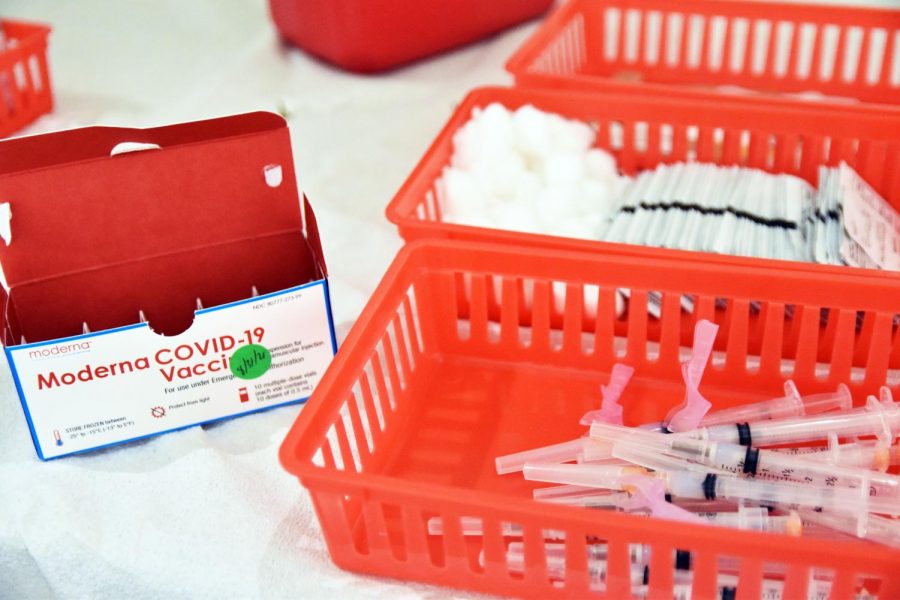
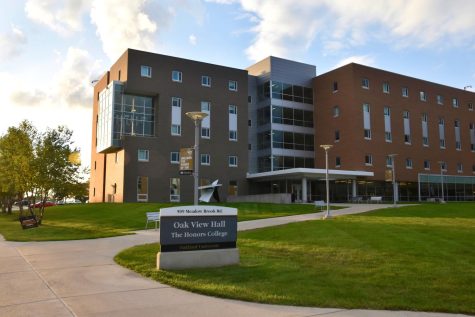
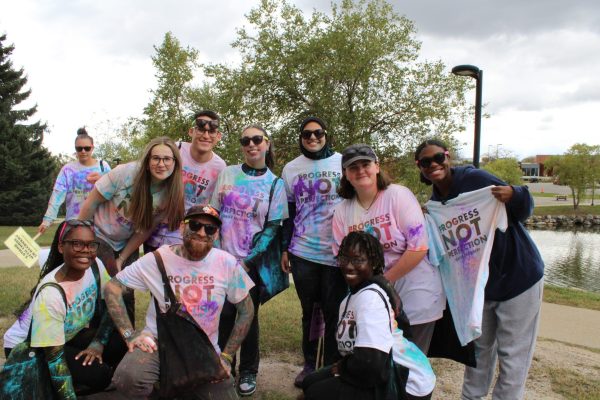
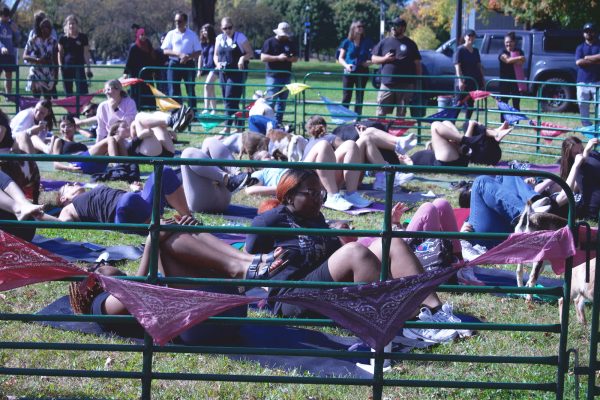

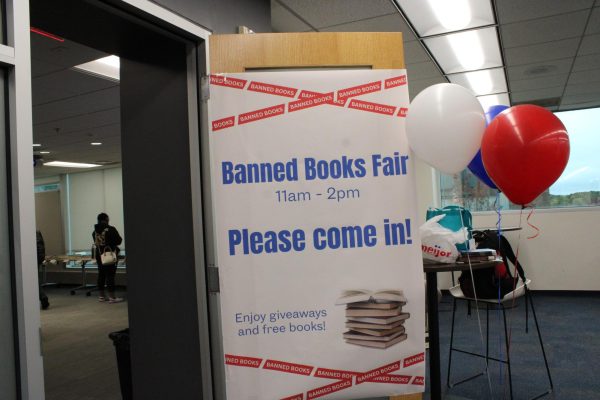


Lucas • Sep 26, 2021 at 4:54 PM
“Admission is down 4,615 students compared to 2 years ago!”
Wow i wonder if anything else could’ve possibly happened in that 2 year window that would make people want to go to college less or make it harder for people to go. Let me think on that…
Tom L • Sep 26, 2021 at 12:12 PM
“furthering a socialist political agenda”
Tell me you don’t have any idea what socialism is without telling me.
Joey Colby • Sep 25, 2021 at 12:25 PM
Anti-Mandate = Anti-Vaccine.
You are not wanted on campus if you are not willing to do the bare minimum to stop the spread of a deadly virus. I have lost friends to Covid-19, people have died. It is my deep and sincere wish that this whole vaccine mandate was part of a socialist agenda, unfortunately that’s not the case. People spouting “SoCiaLisM aGeNdA” are delusional, these are the same people that fight for tax cuts for billionaires.
Allen • Oct 18, 2021 at 10:44 PM
Detroit is the most populated city in the state and has the lowest vaccination rate. How’s that fit into your political narrative?
OU Faculty • Sep 24, 2021 at 1:12 PM
One of my undergrad research assistants is living in Oak View and her suite mate is NOT vaccinated and has NOT filed an exemption. My student issued a complaint with the Housing Department and their response was essentially “oh well”. Granted that this is one anecdote, but it still provides evidence that vaccine mandates are not being enforced well.
Allen • Oct 18, 2021 at 10:58 PM
Remember last year when people were being shot and otherwise attacked for simply asking someone to wear a mask or being angry because someone wasn’t wearing a mask? Why are you asking Housing to put themselves at risk?? They aren’t medical professionals or vaccine police. Why don’t you have the courage of your own convictions? You’re faculty!
Reggie • Sep 24, 2021 at 12:27 PM
Meanwhile, the CDC continues to publish peer reviewed studies in which they hold that only “targeted mitigation efforts” focusing on vaccination only for those at high medical risk and their close contacts (NOT universal vaccination) is medically/scientifically warranted. Link: http://dx.doi.org/10.5888/pcd18.210123
The head of the CDC, as well as this university, seem to be deliberately ignoring the science of Covid in favor of furthering a socialist political agenda, and encouraging the clearly unethical administration of unnecessary and contraindicated medical treatment. If there is anyone at Oakland still truly dedicated to science, medicine, and/or ethics, whether student or faculty, they should be protesting this politically-driven abandonment of integrity in the strongest terms possible.
Allen • Oct 18, 2021 at 10:53 PM
No mention of natural immunity either. How long have we known about the human immune system?
Math Mama • Sep 23, 2021 at 10:33 PM
“The vaccination rate on campus is steadily increasing, and we expect to meet our goal of a fully vaccinated campus.” You’ll reach your goal by driving all your students away. Your increase in vaccination rate is probably not coming from a change in the numerator, but looks more like a decrease in the denominator. Adding up your enrollment — only 14,398 students. That is a loss of 4,615 students compared to just two years ago. Good-bye Oakland University. It is going to be a whole lot more than $17 million lost; it looks a lot more like $65 million.
Allen • Oct 18, 2021 at 10:51 PM
They can’t afford to pay overtime but somehow can come up with an extra $100 for every student, faculty and staff member that gets the jab.